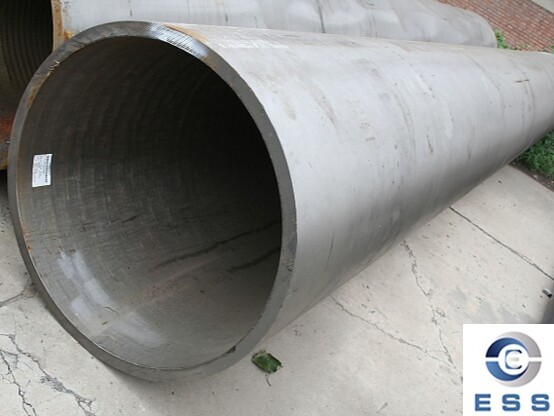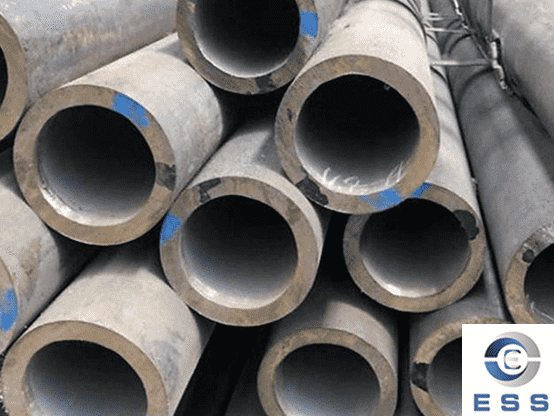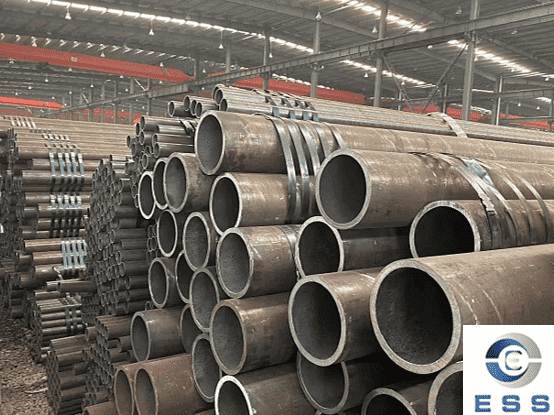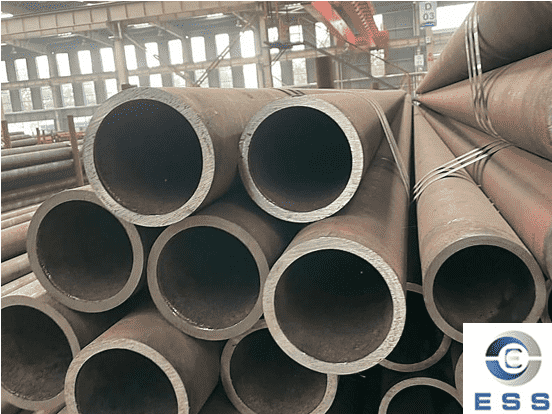
ERW boiler
tube (Electric Resistance Welded Boiler Tubes) is a steel tube for boiler
manufactured by resistance welding, mainly used to transport water, steam or
other media under high temperature and high pressure environments. Its core
feature is the use of resistance welding technology, which uses the heat
generated by the electric current to melt the edges of the steel strip to form
a tube, which has efficient production and cost advantages.
Manufacturing process
1. Steel strip pretreatment: Cold-rolled or
hot-rolled steel strips are flattened and trimmed.
2. Forming and welding: The steel strip is
curled into a tube, and the metal at the joint is melted by high-frequency
current (HFW) or low-frequency current, and pressure is applied to complete the
welding.
3. Post-processing: Heat treatment of the
weld (such as normalizing) to eliminate stress, sizing, straightening, cutting,
and finally non-destructive testing (such as ultrasonic, eddy current testing)
and pressure testing.
Material selection
1. Common materials: Carbon steel (such as
20G, SA-178C), low alloy steel (such as Q345, 15CrMoG).
2. Standard specifications: Must comply
with ASME SA-178 (carbon
steel pipe), SA-192 (high-pressure boiler tube), GB 3087 (Chinese national
standard), etc.
Performance characteristics
1. High strength: Materials and processes
ensure pressure bearing capacity and adapt to the high-pressure environment of
boilers.
2. Uniform welds: High-frequency welding
makes the welds narrow and flat, reducing the risk of defects.
3. Dimensional accuracy: Cold rolling
process ensures small tolerances for outer diameter and wall thickness (such as ±0.10mm).
4. Temperature resistance: Heat treatment
improves creep resistance at high temperatures.
5. Economical: High production efficiency,
lower cost than seamless
pipe (reduced by about 20%-30%).
Application areas
1. Power plant boilers (large thermal power
generation, nuclear power generation)
Water Wall: Thin wall (usually 3~8mm), high
precision (outer diameter tolerance ±0.1mm), suitable
for dense arrangement requirements. Materials such as SA-210C (medium carbon
steel) or 15CrMoG (low alloy steel), temperature resistance up to 450~600℃.
Superheater and reheater: The material
needs to be resistant to high temperature oxidation and creep, such as
SA-213T11 (1.25Cr-0.5Mo steel) or T91 (9Cr-1Mo steel). The pipe diameter is
small (φ25~50mm), the wall thickness is 4~8mm, and
high-frequency welding ensures the uniformity of the weld.
Economizer: Carbon steel pipes (such as
SA-178C) are used in medium and low temperature environments (200~400℃), and the serpentine pipe structure requires high bending accuracy.
2. Industrial boilers (chemical, textile,
food processing, etc.)
Steam boilers: The material is mainly 20G
(GB 3087) or SA-192 (ASME standard).
Hot water boilers: ERW carbon steel pipes
(such as Q235B) are commonly used, and the surface is galvanized or coated for
corrosion protection.
Waste heat recovery system: 09CrCuSb
(sulfuric acid dew point corrosion resistant steel) is commonly used. The
modular design relies on the size consistency of ERW pipes for quick
installation.
3. Petrochemical and energy equipment
Refining unit heat exchanger: Generally
requires 15CrMoG (H₂S corrosion
resistance). Temperature 300~450℃, pressure 4~10MPa, weld normalizing treatment improves stress
cracking resistance.
Coal chemical gasifier: Generally requires
12Cr1MoVG (high temperature creep resistance). Temperature 500~800℃, the outer wall is sprayed with silicon carbide wear-resistant
coating.
LNG liquefied natural gas equipment:
Generally requires 09MnNiDR (-196℃ low temperature
impact toughness). Temperature -162℃, full pipe -40℃ Charpy impact test meets the standard.
4. Environmental protection and new energy
facilities
Waste incineration boiler: The material is
generally 2205 duplex stainless steel (resistant to Cl⁻ corrosion) and Inconel 625 cladding on the inner wall.
Biomass boiler: Generally requires TP347H
(18Cr-10Ni-Nb, resistant to alkali metal vapor corrosion). Wall thickness
8~12mm, extending the replacement cycle in alkaline corrosion environment.
Solar thermal power generation: 316H
stainless steel (resistant to 565℃ molten salt
oxidation) is commonly used as the material. 100% radiographic detection (RT)
of welds to ensure zero leakage of high-temperature molten salt.
5. Special industrial scenarios
Ship power boiler: EH36 marine steel
(resistant to salt spray corrosion) is often used. The outer wall is coated
with epoxy resin to adapt to the high humidity environment of the ocean.
Geothermal development wellbore: Used for
geothermal well casing
pipe and heat
exchanger tube. Gr.2 titanium alloy (resistant to geothermal fluid Cl⁻ corrosion) is generally used.
Summary
ERW boiler tubes have become an
indispensable and important material due to their efficient manufacturing
process, superior performance characteristics and wide range of applications.
From large power plant boilers to various special industrial scenarios, ERW
boiler tubes meet the use requirements in different environments through
precise size control, high-strength pressure resistance and excellent
temperature resistance.













 Eastern Steel Manufacturing Co.,Ltd not only improve product production and sales services, but also provide additional value-added services. As long as you need, we can complete your specific needs together.
Eastern Steel Manufacturing Co.,Ltd not only improve product production and sales services, but also provide additional value-added services. As long as you need, we can complete your specific needs together.










